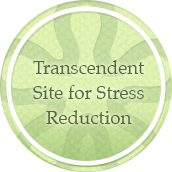Early in 2006, I was diagnosed with osteoporosis. Not osteopenia, which is a weakening of the bones, but full-fledged osteoporosis.
At first I felt betrayed.
I had been practicing yoga for almost 20 years. Yoga is supposed to be protective, to build bones through weight bearing. Downward dog, headstands, shoulder stands, handstands – I had found a gym inside my own body, and I used it.
Besides, I was doing everything else that doctors recommended: lots of calcium and vitamin D, lots of walking, no smoking and very limited amounts of alcohol.
But with osteoporosis, genetics trumps prevention. I’m a fair-skinned woman of European descent. My mother once broke a vertebra by sitting down hard in an upholstered chair.
My doctor said the new reading might have been the difference between the old bone density scanner and the new one, and not really a change.
She talked about the importance of balance, and muscle strength, and the fact that bone density and fractures don’t correlate as precisely as you might imagine.
And she suggested I try one of the drugs, Fosamax, that works by inhibiting osteoclasts, the cells that lead to bone resorption into the blood stream.
I took Fosamax for a while, but then I read stories about the link between this family of drugs and a condition called jaw necropsy, in which the bones of the jaw die because the decayed cells are no longer being cleaned away. I stopped taking it.
For a while I felt fragile, as though I might break at any moment. I stopped doing hand balancings, fearing for my wrists. Then I got angry. One morning practice, on a backbends day, I did headstand drop-overs, one after another, with a most unyogic curse word between each one. Nothing happened.
In the next six months I fell twice, both times badly. Nothing broke.
It’s been more than four years now, and my practice is stronger now than it was then.
Still, I’m faced with the same dilemma as everyone else who gets a diagnosis of osteoporosis. If I don’t take the drugs, there’s really nothing I could do about it, except to go on following the guidelines for prevention – and they didn’t work.
Right now I’m travelling in Wales. If I weren’t, I would be signing up for Faye Berton’s Bones for Life workshop,
Faye has more than 20 years of yoga and Feldenkrais teaching experience, and is a certified Bones for Life instructor, based in St. Paul, Minnesota.
Bones for Life is based on the work of Ruthy Alon, a Feldenkrais practitioner. She teaches bone-strengthening movements and alignment that strengthen bones through normal movement. As she writes on her website:
“Comparative research shows that African women, who carry massive loads on their heads with effortless grace, are one hundred times less liable to fractures than women in the West, despite the fact that their bone density is lower than that of Western women.”
The Bones For Life movements are gentle enough for seniors, but, at least on the evidence of some rather grainy videos posted on YouTube, effective enough to create dramatic change in the way people move.
It makes sense to me that changing the way we carry our weight could change the way our bones respond.
And that’s by far the most useful thing I’ve seen so far to do about osteoporosis.
Bones for life is coming to Yoga on 7th on July 24 and 31, two Saturday afternoons, from 1 to 5 p.m. It’s in two parts; the first Saturday open to everyone, the second to those who have attended the first.
If you’re interested in attending, check the Yoga on 7th website for more details, or email Mary Balomenos at [email protected].

Comments on this entry are closed.
Thank you for that article.
Do you still forard bend such that you are flexing your thoracic spine?
How about shoulder stands?
I am not sure when this blog was written. Maybe your numbers have improved?
Thank - you!
Hi Cat,
I wrote that post in June of 2010, coming up to two years ago.
I still do forward bends, but never with my thoracic spine flexed – or at least I certainly try not to. I work for a concave spine, and a long front body, and attempt to keep my spine long as I bend forward.
I do a shoulder stand almost every day, and love the pose.
I haven’t had my bone density tested in several years. My current doctor doesn’t see the point, especially because I’m still not willing to take the osteoclast-inhibiting drugs. She also doesn’t put much stock in the scanners.
Most of the time I just forget the diagnosis and live the healthiest life I can.